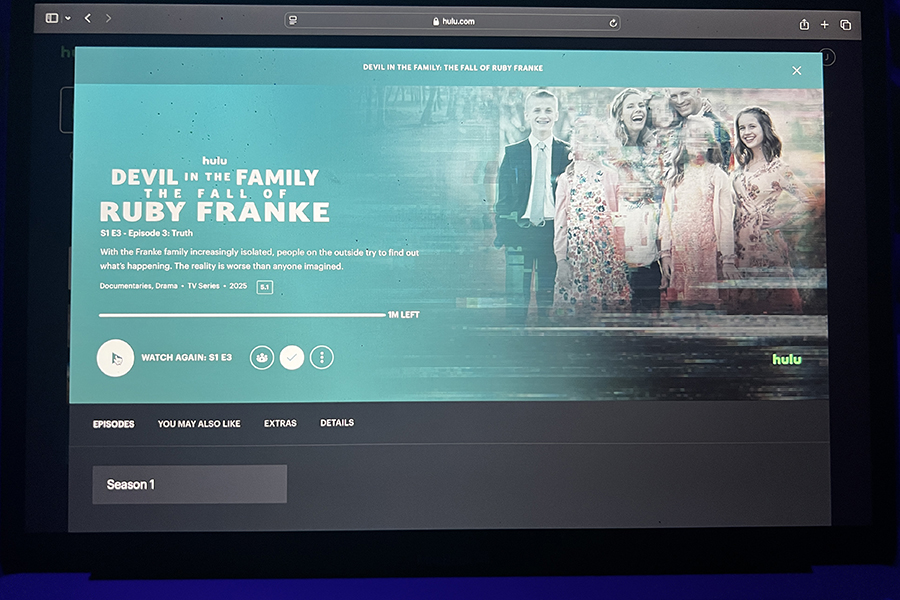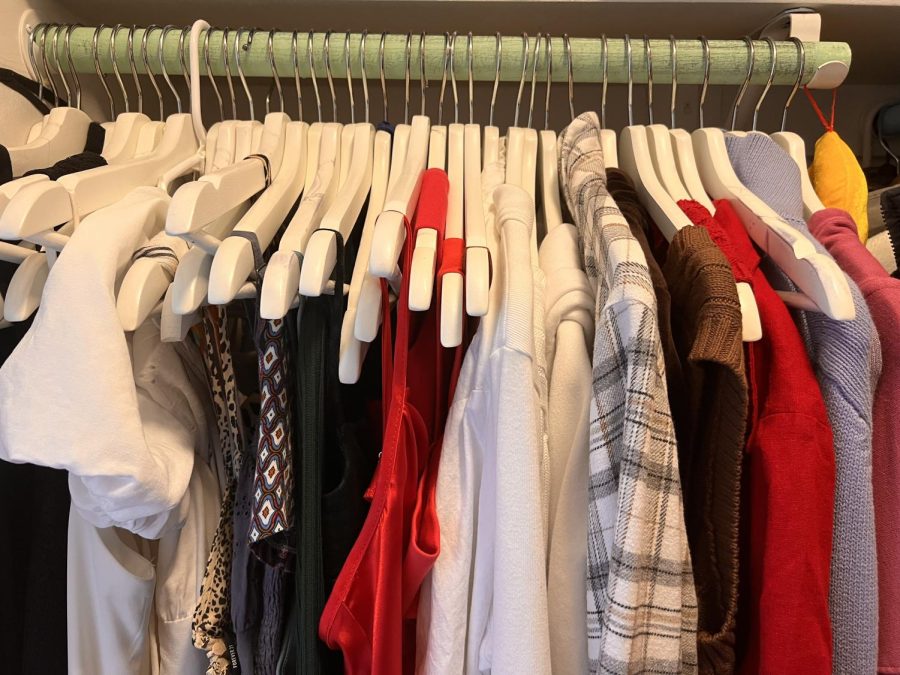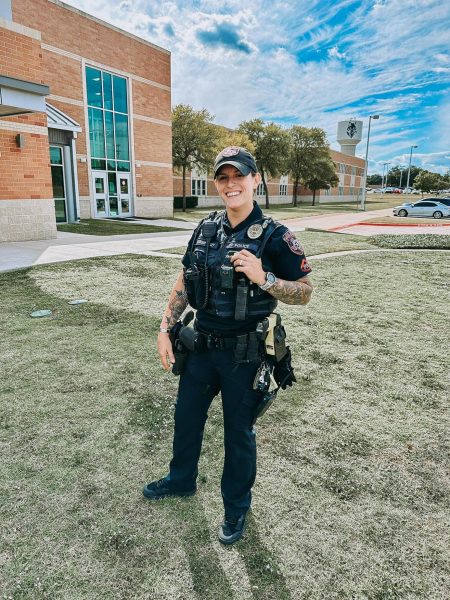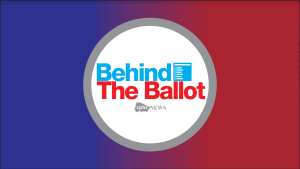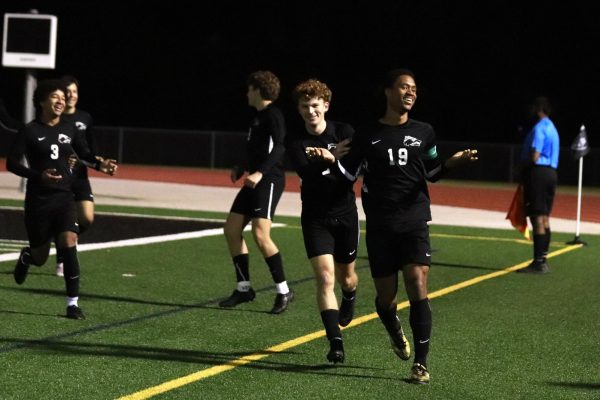Dress Coded
A Balance Between Expression and Impression
Deciding what to wear in the morning felt like a minefield. Now, with the new dress code established a few years ago, students no longer have to tread lightly about what they will wear to school that day.
November 18, 2022
One of my most memorable experiences at school was being dress-coded. You may ask, “What did you get dress-coded for?” It was a bra strap. My. Literal. Bra. Strap. Was. Showing. Apparently, the bra strap was “too distracting” for the other students in my class. This was the moment I realized that the old dress code was unfair and unrealistic.
Don’t get me wrong. I understand why there’s a dress code. Of course, students shouldn’t be wearing clothing that has offensive material, and students also shouldn’t show up to school with a bikini or swim trunks (unless Homecoming week calls for it). Thankfully, I haven’t seen either of those things happen yet – phew.
However, I believe that the old dress code targeted mostly girls, and that was a huge problem. Bra straps, cleavage, crop tops and tank tops are considered “feminine” clothing, and the dress code is aimed at these clothing items. I can ask pretty much every one of my female friends about whether they’ve been dress-coded, and they’ll say “Yes, of course.” However, being dress-coded doesn’t seem to be a common experience for guys.
Deciding what to wear in the morning – or if you’re a planner, at night – felt like a minefield. Questions like “Will this shirt be too short?” and “Is my bra strap showing?” are unrealistic to the standards of the real world. Nobody is going to care about showing your shoulders, your short shorts or a crop top. And neither of those things hinders another student’s ability to learn in the classroom. If another student has a problem with any of those things, then that should be addressed one by one, not as a code that affects all students at the school.
In the past few years, the dress code has changed. According to the new dress code, or more like the lack of dress code, no longer do shorts have to be fingertip length, and no longer do we need to hide our bra straps, ahem. Students being able to express themselves with clothing at school ushered in a new era, which was exciting, especially after the turbulent virtual 2020 school year.
I love walking down the hallway during passing periods and looking at all the different styles. It’s almost like a mini fashion show – you don’t know what kind of design you’re going to see. Whether it’s a TV mounted on a chest so students can watch a movie while walking past, or a really cute fit, I love that the school and district understand and honors a student’s ability to express themselves.
While the new dress code offers students a channel for self-expression, I understand that it can sometimes have negative effects. From a teacher’s perspective, I can see how a student showing up to class in pajama pants and an oversized hoodie might make a lazier impression than a student who shows up in a more active getup. I definitely have my off days: the days when I cannot bother to look good for school, or days when I’m not feeling my best. It’s just important to know that it’s up to the student’s discretion on the impression they make on their teachers.
Overall, the new dress code has its ups and downs. The virtual lack of dress code is realistic and gives students a method of expressing themselves, but it can also affect the impressions you make on teachers and even other students. I believe the new dress code is something worthwhile and important, but I also recognize that there must be a balance between dressing to express and the impressions you make with that expression.

![Posing with their UIL State Trophy, the Robolobos Van Halen Team beams with excitement after their win. “It was a team effort,” junior Noah Vo said. “I was happy because something happened in the first match and the match was also really close. So [when] they finally revealed it, I was pretty happy.” Photo courtesy of Amy Lovelace](https://cphswolfpack.com/wp-content/uploads/2025/05/IMG_0910-EDIT-1200x723.jpg)

![Broadcast, yearbook and newspaper combined for 66 Interscholastic League Press Conference awards this year. Yearbook won 43, newspaper won 14 and broadcast took home nine. “I think [the ILPC awards] are a great way to give the kids some acknowledgement for all of their hard work,” newspaper and yearbook adviser Paige Hert said. “They typically spend the year covering everyone else’s big moments, so it’s really cool for them to be celebrated so many times and in so many different ways.”](https://cphswolfpack.com/wp-content/uploads/2025/05/edited-ILPC.jpg)


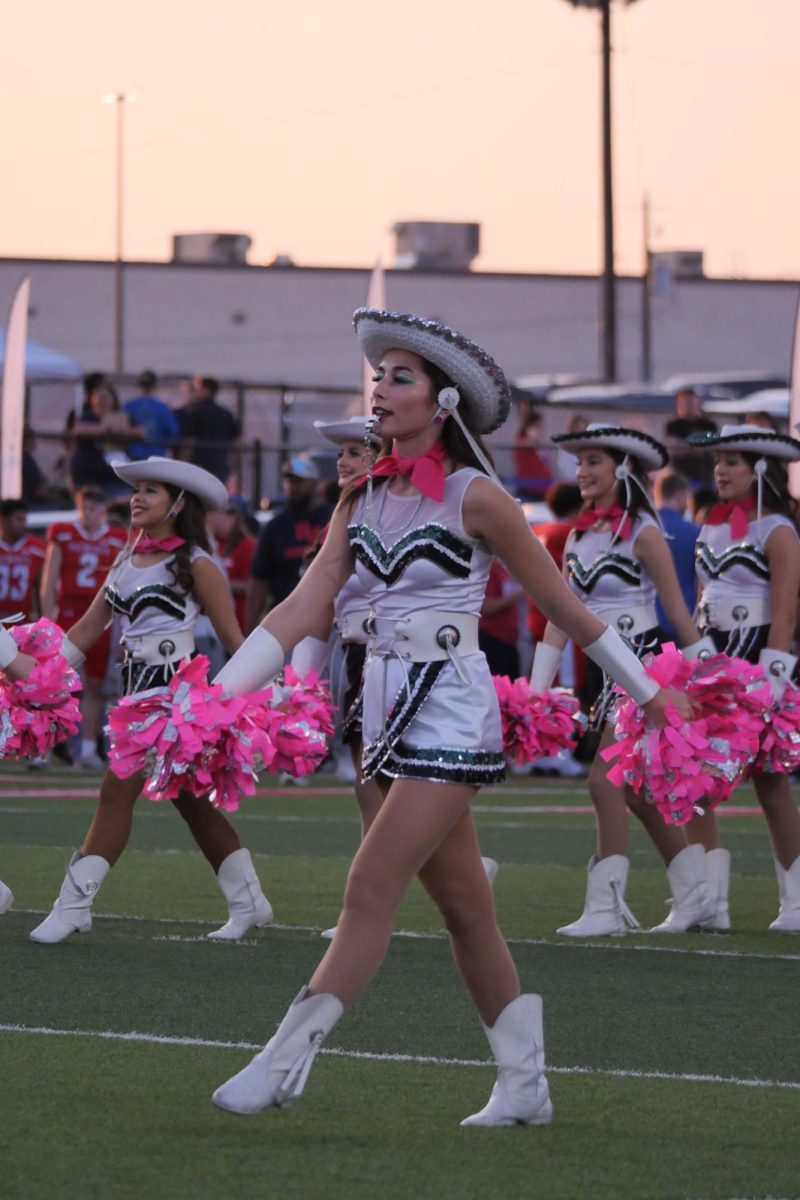








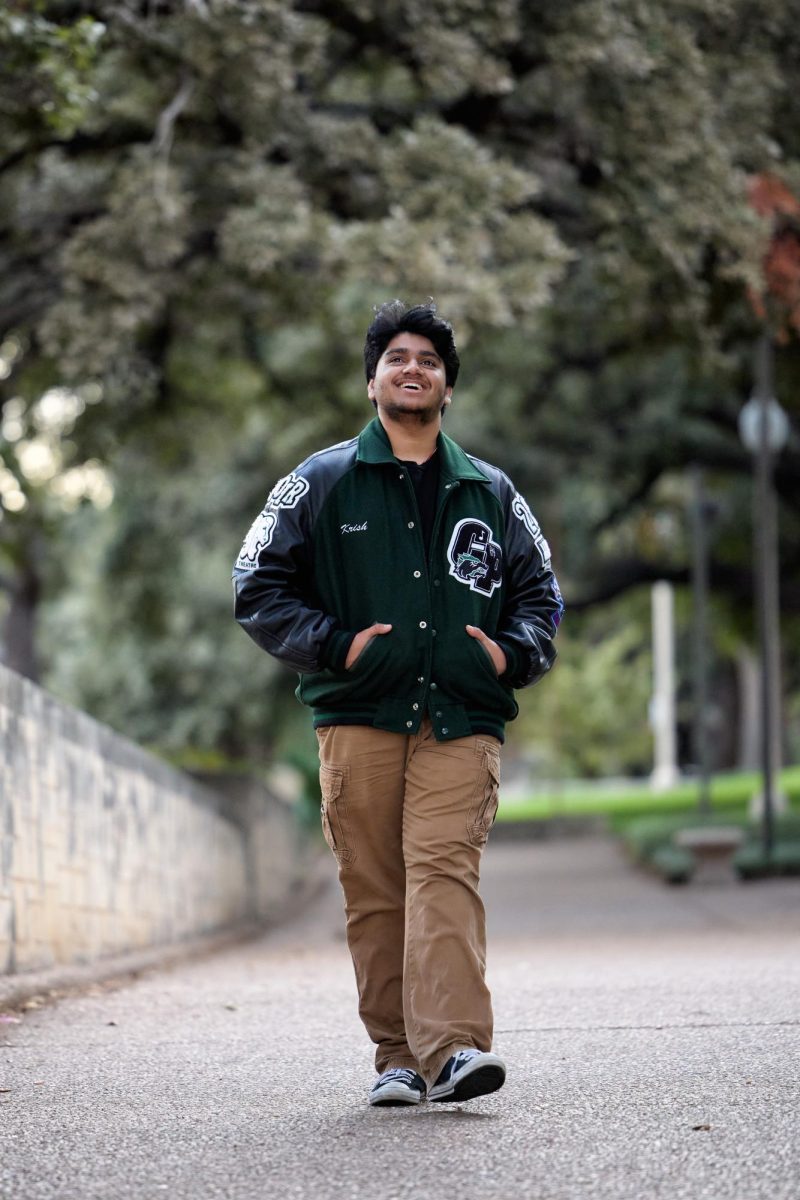
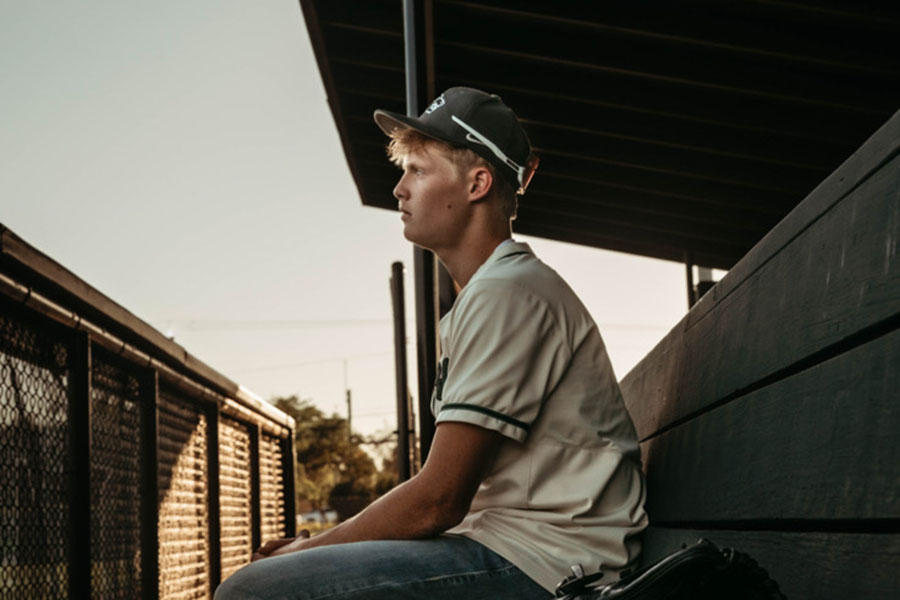
![Bringing her arm over her head and taking a quick breath, junior Lauren Lucas swims the final laps of the 500 freestyle at the regionals swimming competition on date. Lucas broke the school’s 18-year-old record for the 500 freestyle at regionals and again at state with a time of 4:58.63. “I’d had my eye on that 500 record since my freshman year, so I was really excited to see if I could get it at regionals or districts,” Lucas said. “ State is always a really fun experience and medaling for the first time was really great. It was a very very tight race, [so] I was a bit surprised [that I medaled]. [There were] a lot of fast girls at the meet in general, [and] it was like a dogfight back and forth, back and forth.” Photo by Kaydence Wilkinson](https://cphswolfpack.com/wp-content/uploads/2025/03/Kaydence-2.7-23-edit-2.jpg)
![As the support team sits and poses for a photo in the cafeteria with the counseling team they eagerly wait to start their day. "We [all] seem to be a team, I get up every day and there's days where I don't want to go to work today, but I'm thankful that I have a job and I'm blessed to have what I have," Christopherson said. Photo Courtesy of Julie Weltens.](https://cphswolfpack.com/wp-content/uploads/2025/01/AF9E8470-10D7-4C91-BF28-EC8F86BAB66C-1200x852.jpeg)
![Officer Stephanie Cash is in her second year as an SRO at CPHS. “Seeing [students] grow over the years has been kind of cool,” Officer Cash said. “Freshmen that [are] all over the place and then in the next couple of years get a little more squared away and go to class and do work and start thinking about the future. Being a part of a student's growth is the best way to measure my success as an SRO.” Photo Courtesy of Cedar Park Police Department's PIO, Alicia Gallagher.](https://cphswolfpack.com/wp-content/uploads/2024/12/CPHS-SRO-900x1200.jpg)


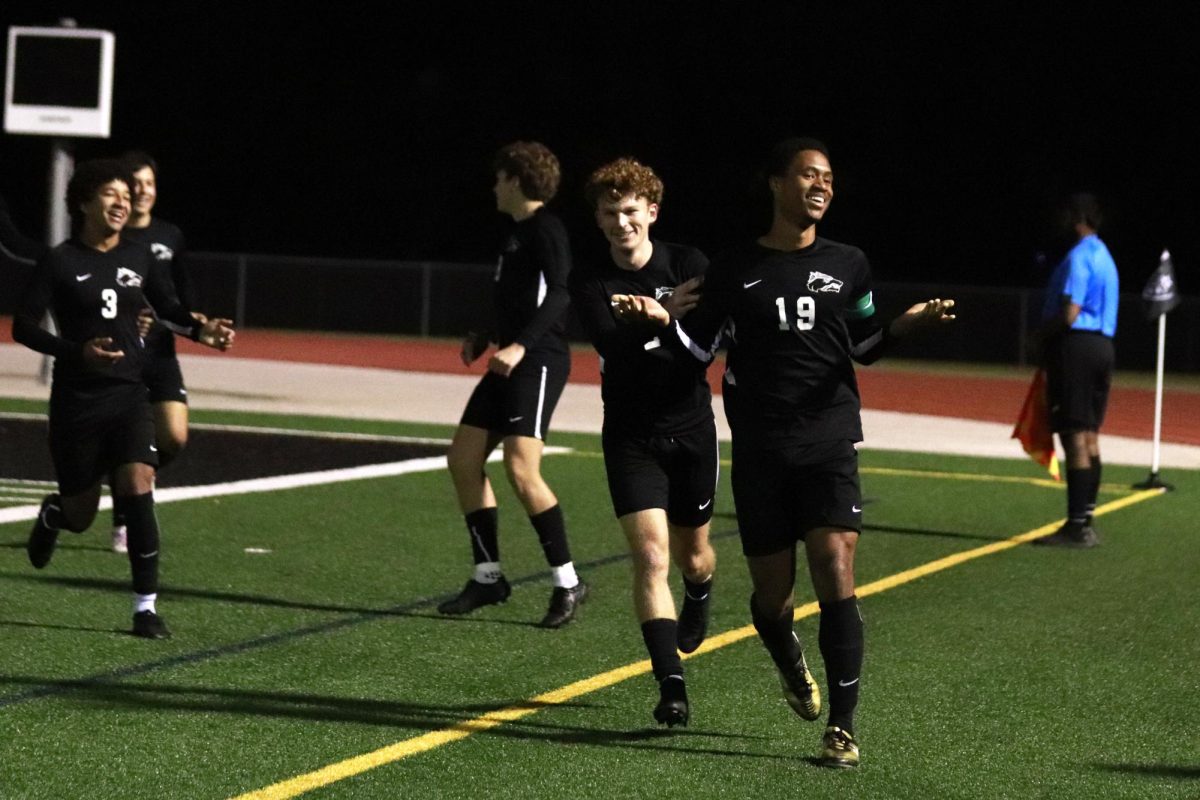
![Taking a breath as he raises his arm up and out of the water, sophomore Kaden Padilla swims the 500 freestyle at the UIL state meet on Feb. 21-22. Padilla placed 10th overall and second in the consolation final in the event, dropping two seconds. “My family was there, so being able to drop time for them was really special,” Padilla said. “It was awesome [finding out I advanced to the consolation finals]. I wasn’t expecting it, and I was very surprised. My parents being there definitely made me a lot happier knowing they got to see me swim in finals.” Photo by Skyler King.](https://cphswolfpack.com/wp-content/uploads/2025/03/kaden-padilla.jpg)

![Three defenders try to stop senior point guard Hope Edwards before the ball leaves her hands. The girls basketball team faced Liberty Hill on Feb 21, losing 58-40. “[My season was] definitely bittersweet,” Edwards said. It's definitely sad [because] I'm gonna miss all my teammates, my coaches and just the whole CP environment.”](https://cphswolfpack.com/wp-content/uploads/2025/03/julia-128-1200x800.jpg)







